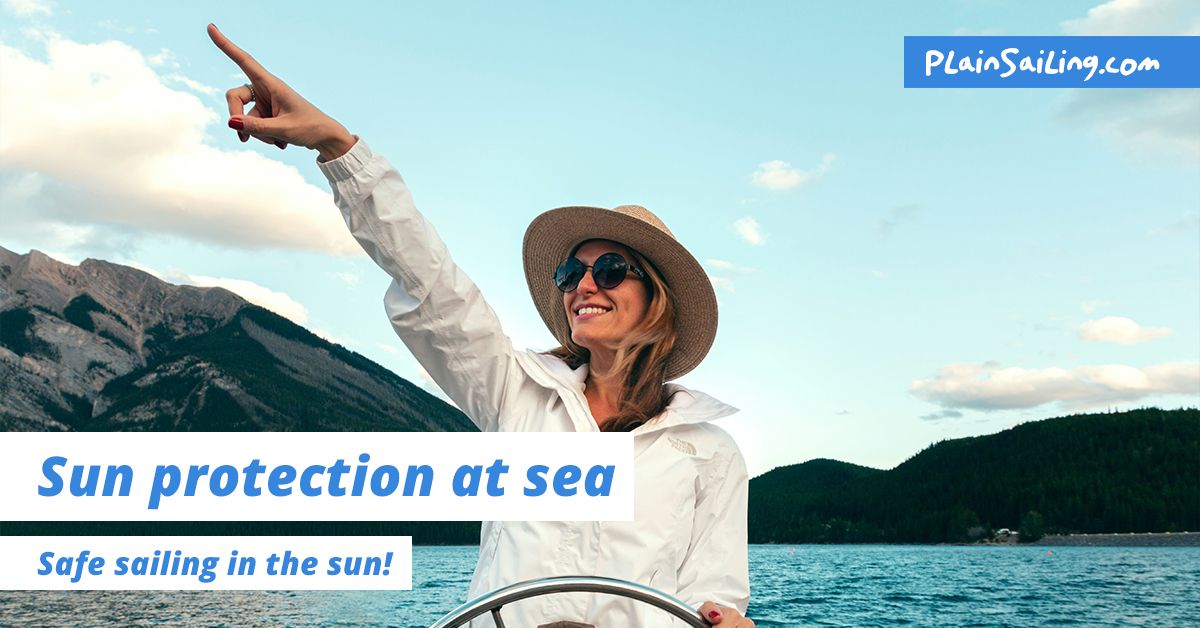Sun protection at Sea
Here's our top tips for essential sun protection measures when you are out on the sea

There’s nothing more exciting than feeling the wind, water and warmth on your face while sailing. It can take you to new and exciting places, like sunny spots like the Bahamas with perma-sunshine and warm tropical waters—a whole new environment for many. However, your time on the water can quickly dampen when the sun gets too harsh, affecting your skin and vision. Going out sailing without the right sun protection can lead to greater harm down the line, especially for frequent sailors. Here are some essential sun protection measures for sailing:
 Sunscreen
Sunscreen
Sailing exposes you to the sun’s harmful UV rays, so slathering on sunscreen before you set sail can keep your skin protected. For some, it can be a nuisance to put it on as it can be sticky on the hands, leave grease stains, or be uncomfortable on the skin. However, your risk for issues like sunburn, skin ageing, and skin cancer increases the longer you go without protection.
For the best sun protection, a broad-spectrum sunscreen with SPF 50 can protect your exposed skin from sun damage. It also pays to be aware of the chemicals in your sunscreen - getting splashed and sprayed with salt water while wearing sunscreen can expose the ocean’s biodiversity to harmful chemicals. Wearing reef-safe sunscreen can help you protect ocean life and your skin when sailing. Avoid chemical-based sunscreens containing oxybenzone and octinoxate, and opt for ones that are mineral or zinc-based instead.
 Sunglasses
Sunglasses
Sunglasses are crucial accessories for sun protection while sailing. However, not all are created equally. Cheap or fake shades may not offer the best sun protection, exposing your eyes to harm from the sun’s UV rays when you’re out on the water. Fortunately, it’s easy to find sunglasses from top brands like Ray-Ban, Oakley, and Tommy Jeans that offer high-quality shades.
Good quality sunglasses should offer 100% UVA and UVB protection or have a rating of UV400, ensuring all of the harmful rays are blocked. You can also customise your sunglasses to add prescription or polarised lenses, improving visual clarity and blocking out the harsh reflections of the sun on the water.
 UPF Clothing
UPF Clothing
It’s tempting to wear airy cotton clothes or swimwear when sailing to beat the heat, but that leaves more of your skin exposed to UV rays. Suncream can help, but covering up is one of the best ways to keep the sun’s rays at bay. Wearing dark clothing with denser fabrics can make sure the light is absorbed instead of penetrating the skin. Longer clothing that covers more of the skin also adds more protection.
Sun-protective clothing also has a protection factor known as UV Protection Factor or UPF. This factor indicates how much UV radiation fabric allows to reach your skin; for instance, UPF 50 clothing blocks 98% of UV light. Clothes with UPF 30 or higher can offer very good to excellent protection.
Sailing can be exhilarating, but the right protection is crucial so you can continue to enjoy heading out onto the water without fear of harm and damage from the sun. It may seem like a nuisance to consider at first, but your skin and eyes will thank you in the long run for the protection.

